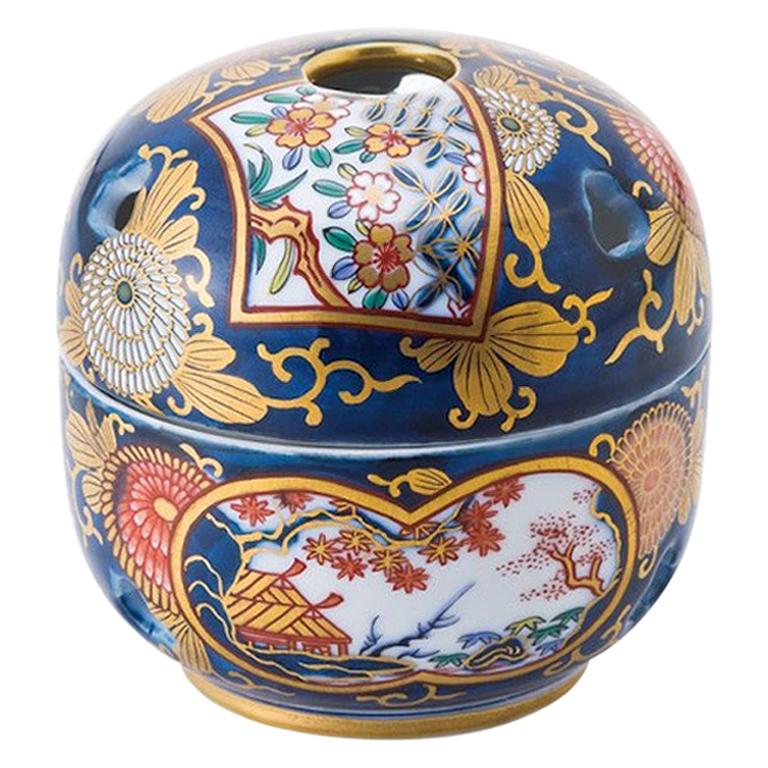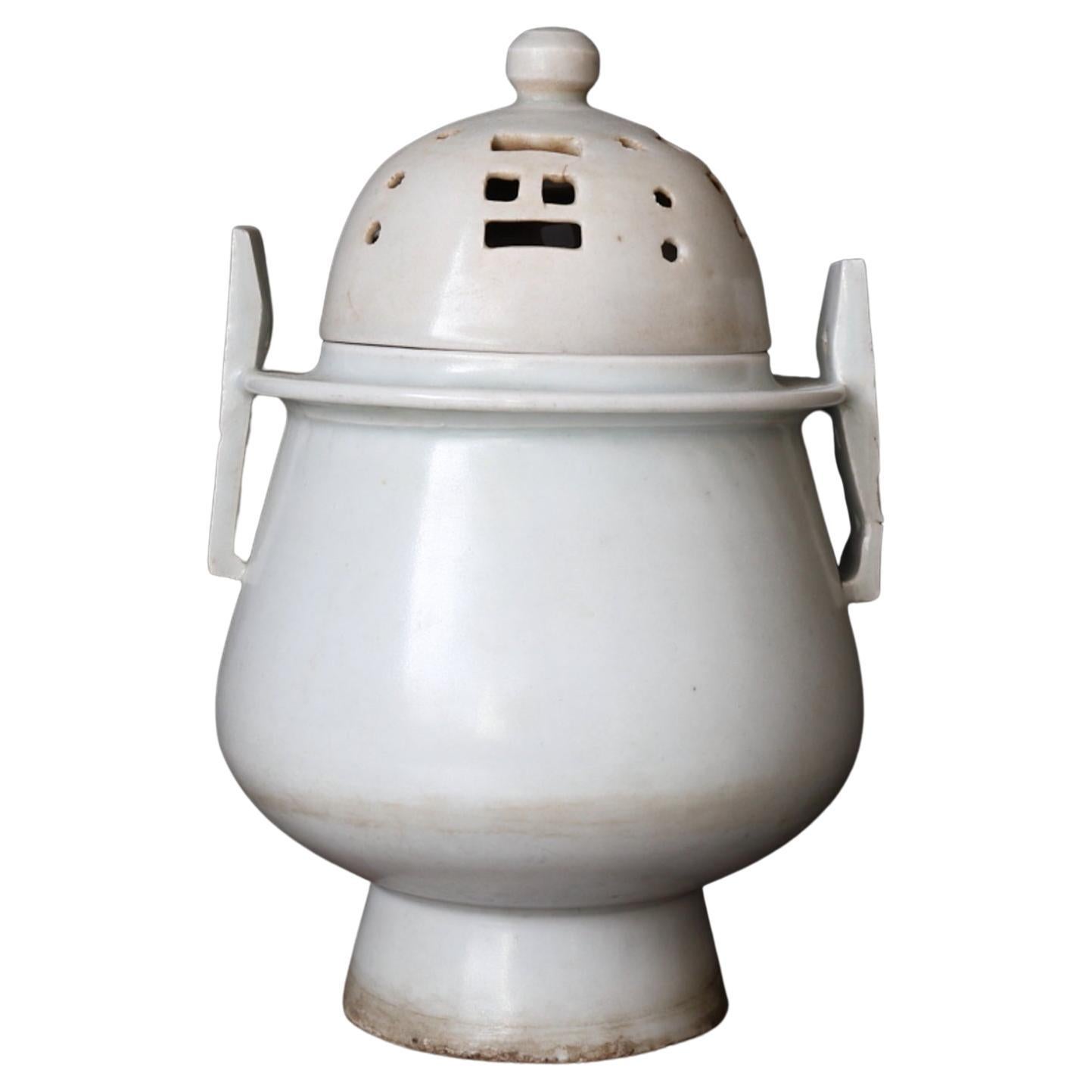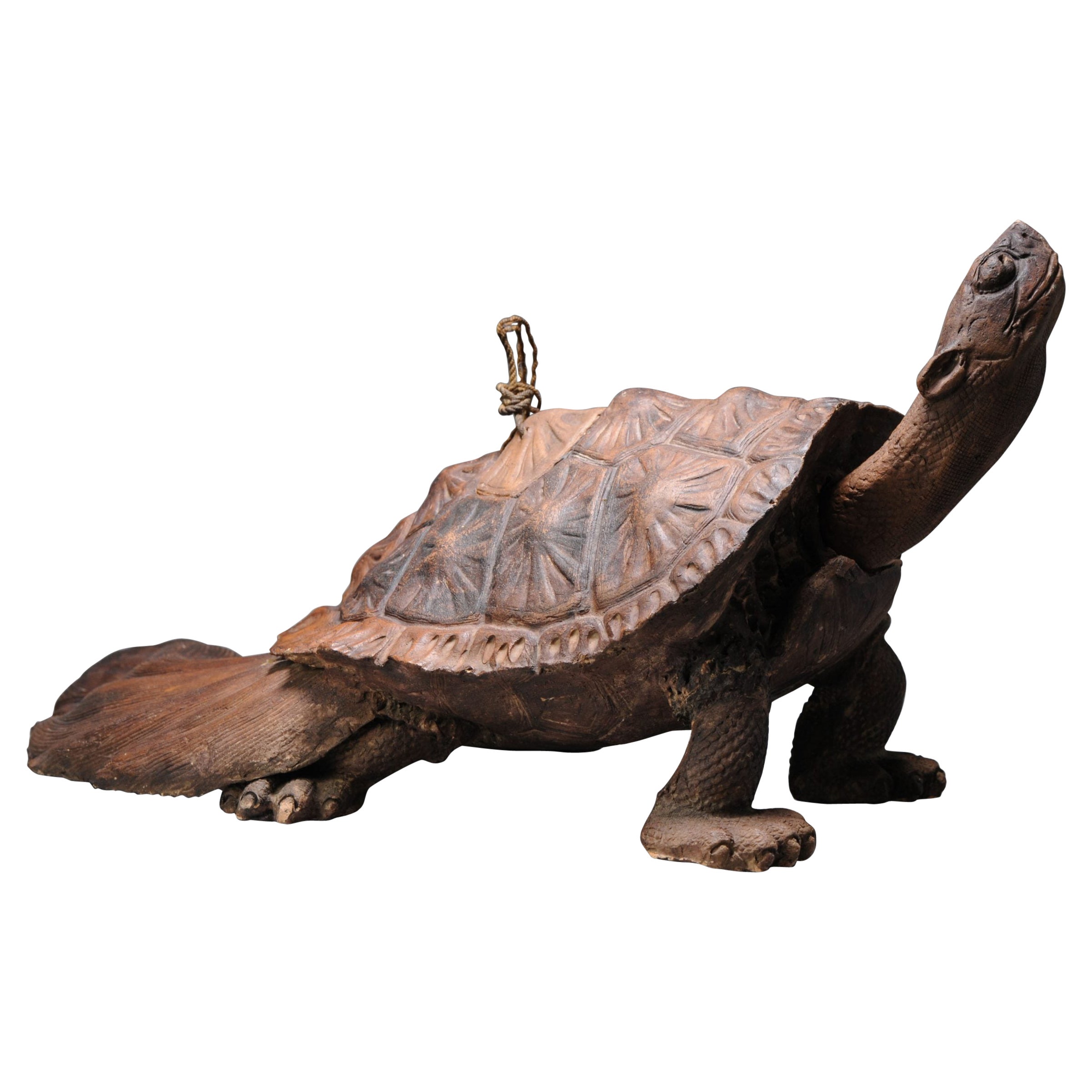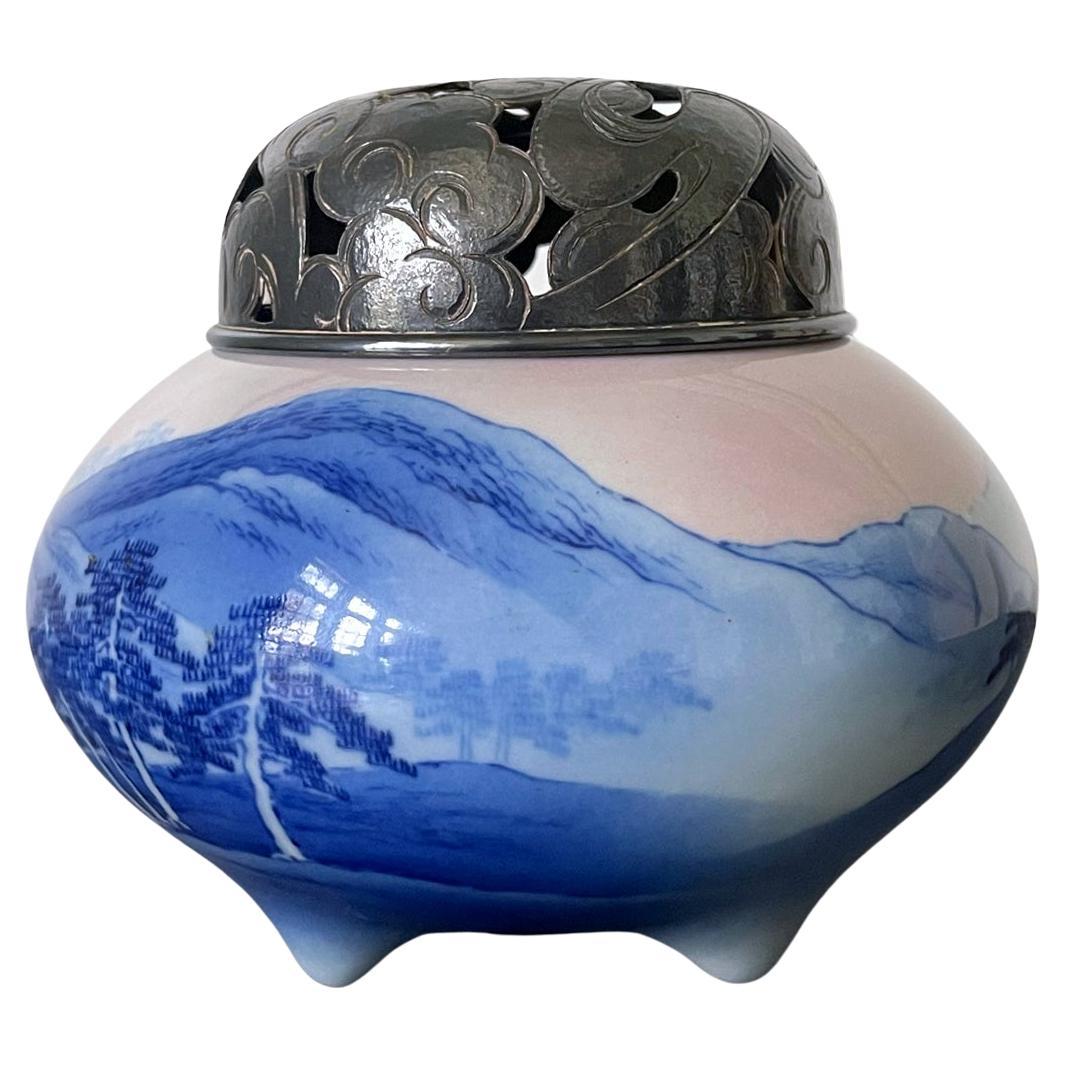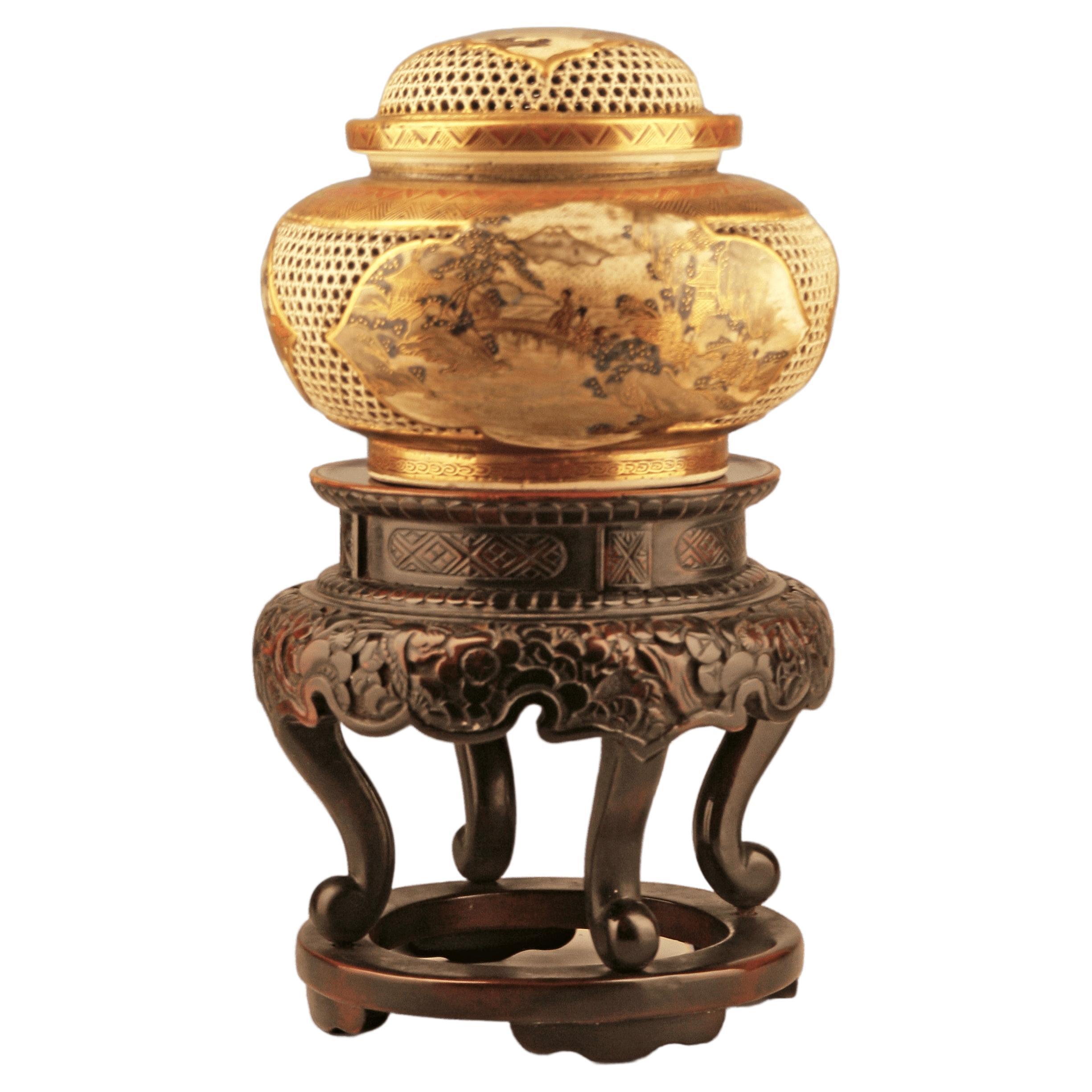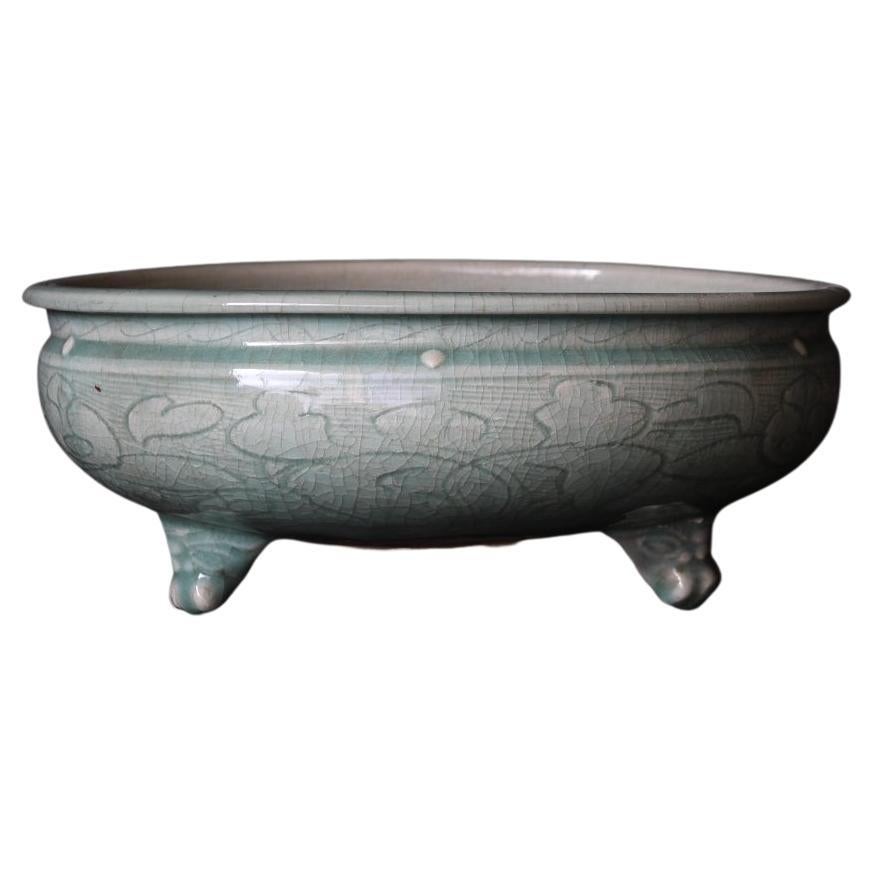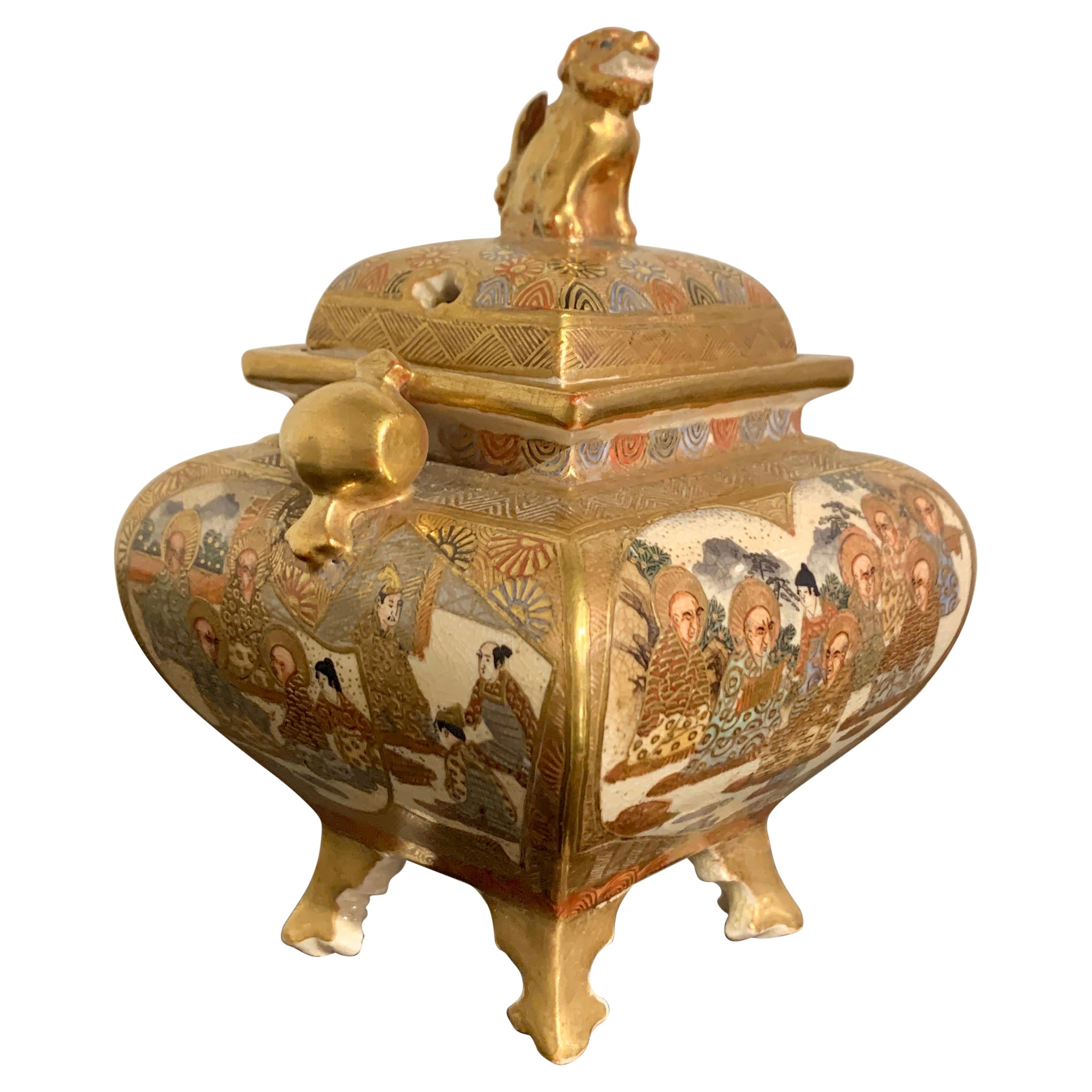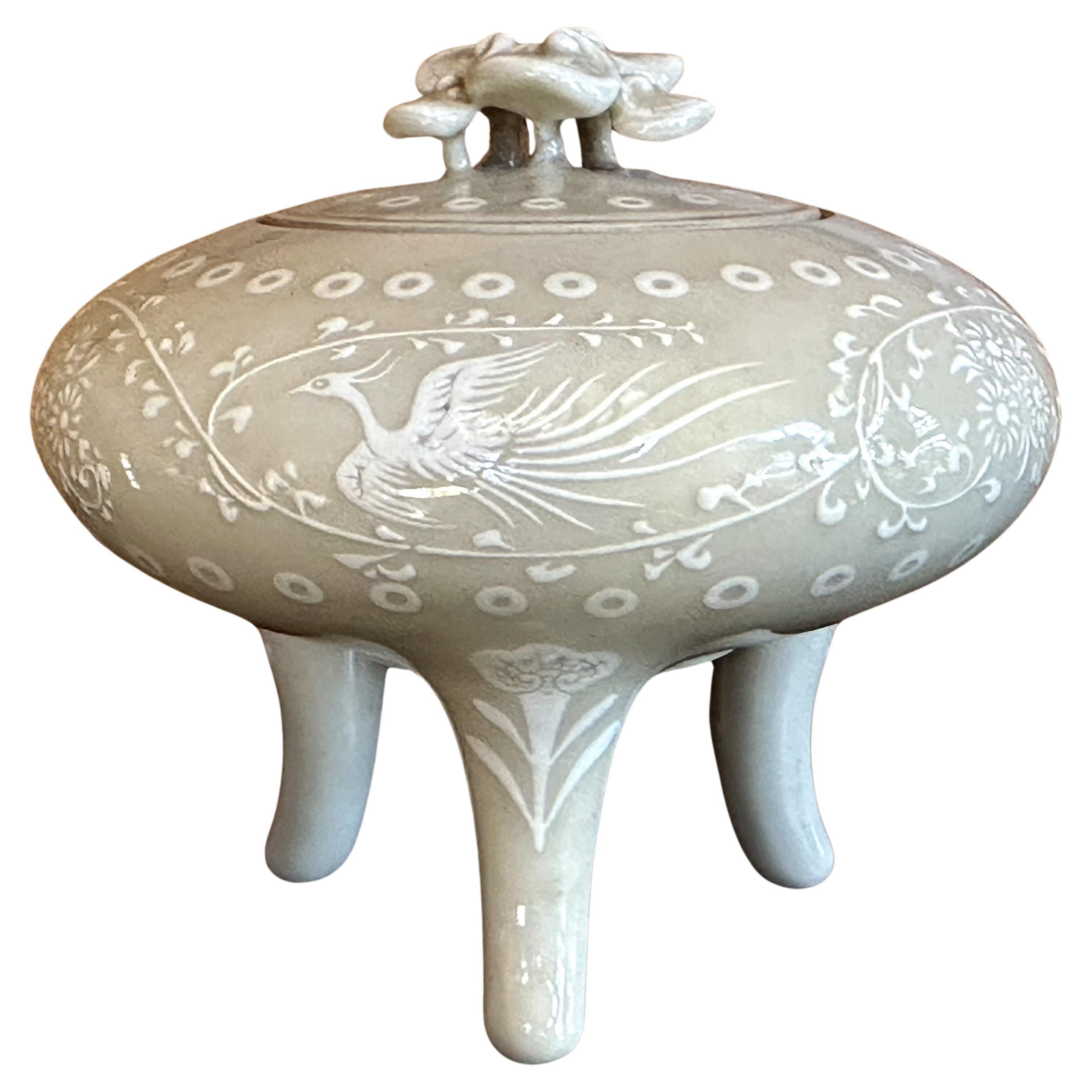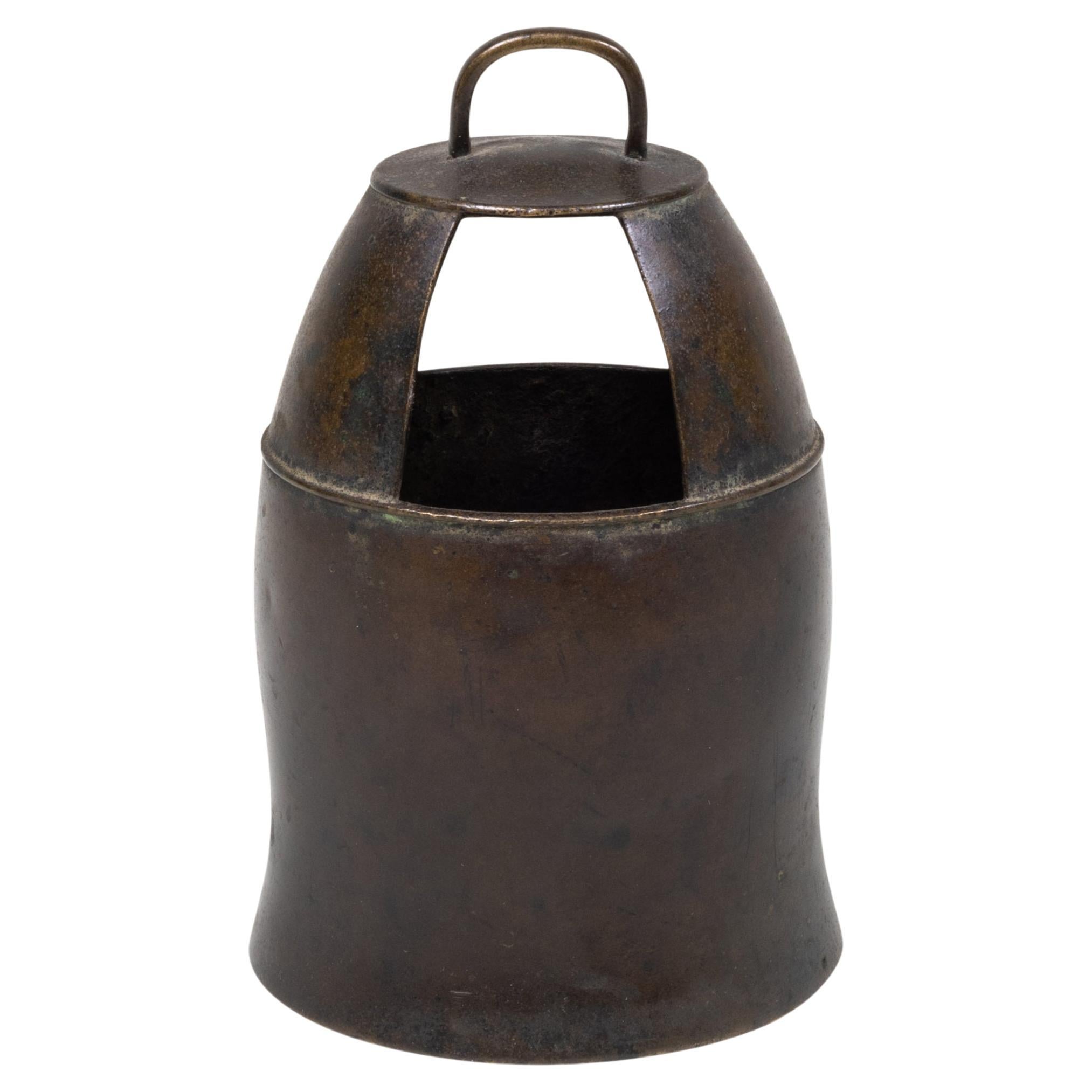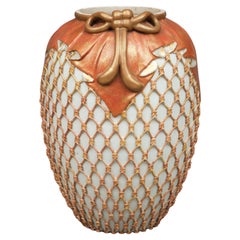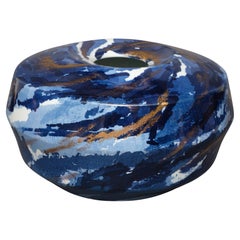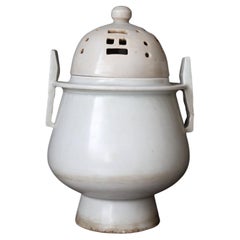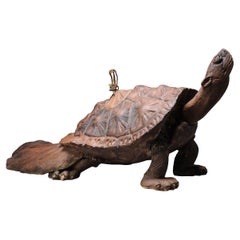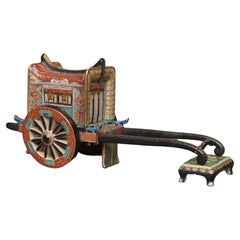
Japanese Kyô’yaki Porcelain Gosho’guruma 御所車 Kôro 香炉 'Incense Burner'
View Similar Items
Want more images or videos?
Request additional images or videos from the seller
1 of 16
Japanese Kyô’yaki Porcelain Gosho’guruma 御所車 Kôro 香炉 'Incense Burner'
About the Item
- Dimensions:Height: 7.6 in (19.3 cm)Width: 15.56 in (39.5 cm)Depth: 6.23 in (15.8 cm)
- Materials and Techniques:
- Place of Origin:
- Period:
- Date of Manufacture:Edo Period
- Condition:In a very good original condition. Please look at the photos for a condition reference.
- Seller Location:Amsterdam, NL
- Reference Number:Seller: B27801stDibs: LU7165231468622
About the Seller
5.0
Vetted Seller
These experienced sellers undergo a comprehensive evaluation by our team of in-house experts.
Established in 1996
1stDibs seller since 2022
16 sales on 1stDibs
Typical response time: 10 hours
More From This SellerView All
- Large Japanese Meiji Kyo-Ware Porcelain 'Tsubo' Vase by Kanzan Denshichi 幹山伝七By Kanzan Denshichi 幹山伝七Located in Amsterdam, NLTall and exceptionally made Kyo-ware porcelain jar (tsubo) with a naturalistically relief design of a coral-coloured net stretched around the body. On the shoulder hangs a beautifully draped red...Category
Antique Late 19th Century Japanese Ceramics
MaterialsPorcelain
- Japanese Edo-period gosho’ningyô 御所人形 (palace doll) of plump, seated childLocated in Amsterdam, NLA charming gosho’ningyô (palace doll) of plump, seated child with a brilliant white skin and a small delicately elegant face, reminiscent of a young noble. The doll is playfully rais...Category
Antique Early 19th Century Japanese Antiquities
MaterialsPaste, Silk, Paint
- Large Japanese Contemporary Porcelain Vase with a Blue & Gold Swirl DesignLocated in Amsterdam, NLVery large rotund-shaped porcelain vase with horizontal ribs and a covering underglaze design of overlapping swirls with a canvas pattern on a white ground. Heightened by gold lustre...Category
Late 20th Century Japanese Ceramics
MaterialsPorcelain
- Japanese Kutani-Ware Porcelain Vase by the Famous Tokuda Yasokichi III 三代徳田八十吉By Yasokichi Tokuda IIILocated in Amsterdam, NLMagnificent Kutani-ware porcelain vase of broad bluster shape by the famous artist Tokuda Yasokichi III (Masahiko) (1933-2009). Its body decorated wit...Category
20th Century Japanese Ceramics
MaterialsPorcelain
- Large Japanese Ovoid Porcelain Vase with Blue & White Landscape, by Shigan 芝岩Located in Amsterdam, NLVery large ovoid shaped porcelain vase with a beautiful blue and white mountainscape design accentuated by a low relief details. The top of the vase ends in an elegant small neck. Y...Category
20th Century Japanese Ceramics
MaterialsPorcelain
- Pair of Japanese High Quality Chôshi 銚子 'Sake Ewers', Signed 'Sei’ô' 晴王Located in Amsterdam, NLPair of high quality cast iron chôshi (sake ewers) with a detailed lacquered lid. Its body with a refined embossed design of a bird of prey (môchô) perched o...Category
Antique Late 19th Century Japanese Antiquities
MaterialsIron
You May Also Like
- Japanese Contemporary Ko-Imari Gold Blue Porcelain Koro Incense BurnerLocated in Takarazuka, JPStunning contemporary Japanese Ko-Imari style porcelain koro or incense burner or jewelry box, hand painted on a beautifully shaped round body in cobalt blue, red and green and gener...Category
21st Century and Contemporary Japanese Meiji Jewelry Boxes
MaterialsGold
- White Porcelain Incense Burner / Korean Antique / Joseon Dynasty/1392 - 1897 CELocated in Kyoto-shi, KyotoThis incense burner presents the characteristics of a typical Yi Dynasty Joseon Dynasty incense burner with a body that rises smoothly from the base, openworked ears and a semi-circu...Category
Antique 17th Century Korean Antiquities
MaterialsCeramic
- Antique Iwayaki Earthenware Edo Incense Burner of a Turtle 19th Century Japan, JLocated in Amsterdam, Noord HollandNicely made and large incense burner or Okimono of a turtle. In earthenware with nice patina. Shimane Prefecture Iwayaki (Nagahama Yaki) Turtle figurine. The head and part of the bac...Category
Antique 19th Century Japanese Edo Antiquities
MaterialsEarthenware
- Antique Japanese Satsuma Mini Koro Incense Burner Japan Meiji PeriodLocated in Amsterdam, Noord HollandDescription: Fabulous Japanese Satsuma koros. Small red marks on both lid and koro, 19th century. Condition: Overall condition perfect. Size: 85 x 80mm H x D Period: Meiji P...Category
Antique 19th Century Japanese Meiji Ceramics
MaterialsEarthenware
$878 Sale Price20% Off - Japanese Glazed Ceramic and Silver Koro Incense Burner Makuzu KozanBy Makuzu KozanLocated in Atlanta, GAA tri-pod ceramic incense burner (koro) by Japanese Imperial potter Makuzu Kozan (1842-1916) circa late Meiji to the start of Taisho period (1890-1910s). A fine example of the artist's work belonging to the late part of his underglaze paint phase (started around 1887 until his death), the surface of the koro was painted in beautiful shades of blue to depict a continuous landscape not unlike a traditional ink and watercolor hand scroll. The rise and fall mountains recede and fade into the horizon and are dotted with groves of pines. The sky is painted with a beautiful subtle shade of pink, suggesting a time of sunrise or sunset. The koro is fitted with an ensuite reticulated sterling silver hoya (incense cover), pierced with swirling cloud and marked with "pure silver' in Kanji. The base is signed in underglaze blue "Makuzu Kozan Sei" within a double ring. The piece is beautifully potted in form and the decoration was done with expertise using the novel technique developed by Kozan called Fuki-e (the blow painting), in order to achieve the striking landscape known as "Mountain and Water" with sense of dimensions and gradient, the poetic effects normally conveyed only by sumi ink staining on paper. The piece comes with an unsigned tomobako (wood storage box) of a recent age. Also known as Miyagawa Kozan (1842–1916), Makuzu Kozan was one of the most established and collected ceramist from Meiji Period. Born as Miyagawa Toranosuke, Kozan established his pottery studio in Yokohama around 1870s and later became one of the appointed artists to the Japanese Imperial household. His work was exhibited in many international fairs that the Meiji government participated at the turn of the century and won many grand prizes. Being one of the most creative ceramists, Kozan started experimenting with new chemical colors from the West in the format of his porcelain glaze around 1880s. New colors allowed him to create underglaze designs that appeared bright, smooth and glossy. He even invented his own receipt of cobalt blue to achieve a much brighter yet softer shade, as evident on this vase. To create landscape that is realistic and dimensional, more common in the western paintings, he was inspired by the native Japanese ink painting technique developed around 1900 by Yokoyama...Category
Antique Early 1900s Japanese Japonisme Ceramics
MaterialsSilver
- Japanese Satsuma Incense Burner, Koro, Meiji Period, Late 19th Century, JapanLocated in Austin, TXA fine and elegant Japanese Satsuma tripod incense burner, koro, with pierced metal lid, signed Eizan (?) Meiji Period, late 19th century, Japan. The koro, or censer, features a stoneware body of slightly compressed globular form, supported on three short and squat legs. The wide mouth with a recessed metal rim, and topped by an openwork metal lid topped with overlapping chrysanthemum blossoms of silver repousse. The body of the koro finely painted with fan shaped cartouches. The fans in the foreground with sprays of blossoming chrysanthemum. The fans in the background with intricate geometric brocade designs. The shoulder of the incense burner decorated with cartouches formed as stylized chrysanthemum petals, and intricately decorated with geometric and floral brocade designs. The painting finely done in raised gilt and polychrome enamels, including the highly desirable gosu blue...Category
Antique Late 19th Century Japanese Meiji Ceramics
MaterialsSilver, Metal
Recently Viewed
View AllMore Ways To Browse
Chinese Porcelain Guanyin
Thai Wash Basin
1970 Vintage Arm Chair
Opal Glass Ceiling
Antique French Set Of Lamps
Mid Century Modern Glass Round Coffee Table
Garden Statuaries
Waste Table
Modern 2 Set Sofa
Pair Chinese Tables Lamp Lamps
In Stock Lounge Chairs
Vintage Mies Chair
Sunroom Table
Victorian Green Glass
Vintage Vases Paris
Upholstered Side And Arm Chair
Italian Square Mirror
Socket Harp
